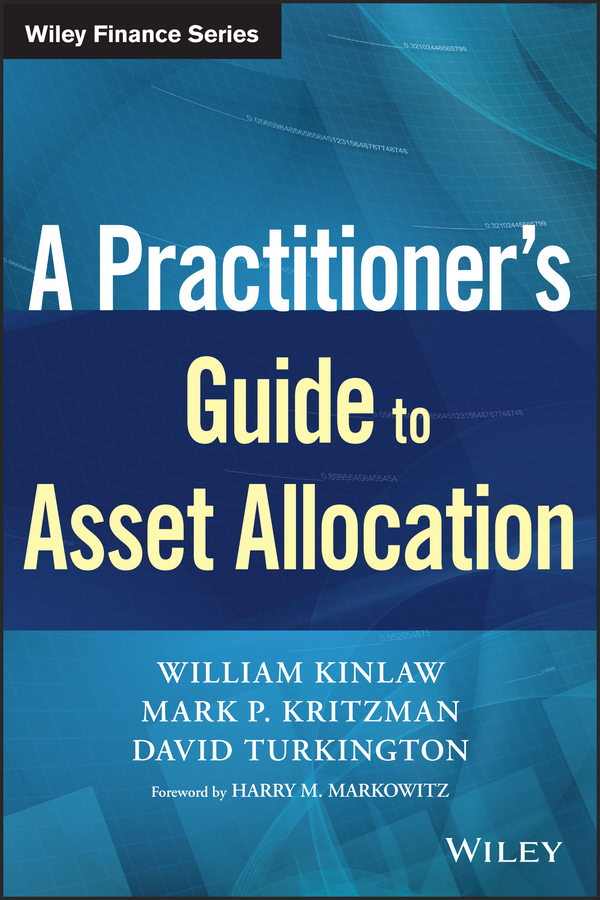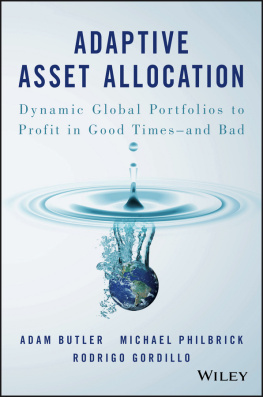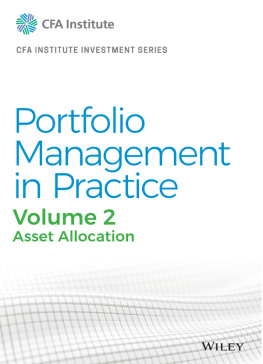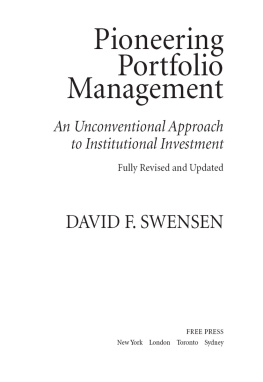
Table of Contents
List of Tables
- Chapter 02
- Chapter 03
- Chapter 04
- Chapter 05
- Chapter 06
- Chapter 08
- Chapter 09
- Chapter 10
- Chapter 11
- Chapter 12
- Chapter 13
- Chapter 14
- Chapter 15
- Chapter 16
List of Illustrations
- Chapter 02
- Chapter 03
- Chapter 04
- Chapter 06
- Chapter 08
- Chapter 09
- Chapter 10
- Chapter 11
- Chapter 12
- Chapter 13
- Chapter 14
- Chapter 15
- Chapter 16
- Chapter 18
Guide
Pages
Founded in 1807, John Wiley & Sons is the oldest independent publishing company in the United States. With offices in North America, Europe, Australia, and Asia, Wiley is globally committed to developing and marketing print and electronic products and services for our customers professional and personal knowledge and understanding.
The Wiley Finance series contains books written specifically for finance and investment professionals as well as sophisticated individual investors and their financial advisors. Book topics range from portfolio management to e-commerce, risk management, financial engineering, valuation, and financial instrument analysis, as well as much more.
For a list of available titles, visit our website at www.WileyFinance.com.
A Practitioners Guide to Asset Allocation
WILLIAM KINLAW
MARK P. KRITZMAN
DAVID TURKINGTON
Copyright 2017 by John Wiley & Sons, Inc. All rights reserved.
Published by John Wiley & Sons, Inc., Hoboken, New Jersey.
Published simultaneously in Canada.
No part of this publication may be reproduced, stored in a retrieval system, or transmitted in any form or by any means, electronic, mechanical, photocopying, recording, scanning, or otherwise, except as permitted under Section 107 or 108 of the 1976 United States Copyright Act, without either the prior written permission of the Publisher, or authorization through payment of the appropriate per-copy fee to the Copyright Clearance Center, Inc., 222 Rosewood Drive, Danvers, MA 01923, (978) 750-8400, fax (978) 646-8600, or on the Web at www.copyright.com. Requests to the Publisher for permission should be addressed to the Permissions Department, John Wiley & Sons, Inc., 111 River Street, Hoboken, NJ 07030, (201) 748-6011, fax (201) 748-6008, or online at http://www.wiley.com/go/permissions.
Limit of Liability/Disclaimer of Warranty: While the publisher and author have used their best efforts in preparing this book, they make no representations or warranties with respect to the accuracy or completeness of the contents of this book and specifically disclaim any implied warranties of merchantability or fitness for a particular purpose. No warranty may be created or extended by sales representatives or written sales materials. The advice and strategies contained herein may not be suitable for your situation. You should consult with a professional where appropriate. Neither the publisher nor author shall be liable for any loss of profit or any other commercial damages, including but not limited to special, incidental, consequential, or other damages.
The opinions expressed herein are the authors own and do not reflect the views of MIT Sloan School of Management, State Street Corporation, or Windham Capital Management.
For general information on our other products and services or for technical support, please contact our Customer Care Department within the United States at (800) 762-2974, outside the United States at (317) 572-3993 or fax (317) 572-4002.
Wiley publishes in a variety of print and electronic formats and by print-on-demand. Some material included with standard print versions of this book may not be included in e-books or in print-on-demand. If this book refers to media such as a CD or DVD that is not included in the version you purchased, you may download this material at http://booksupport.wiley.com. For more information about Wiley products, visit www.wiley.com.
Library of Congress Cataloging-in-Publication Data is Available:
ISBN 9781119397809 (Hardcover)
ISBN 9781119402428 (ePDF)
ISBN 9781119402459 (ePub)
Cover Design: Wiley
Cover Image: ricardoinfante/Getty Images
Foreword
A Practitioner's Guide to Asset Allocation, by William Kinlaw, Mark Kritzman, and David Turkington, speaks to the forgotten man of our field: he or she who interacts with the client and delivers professional investment advice. They are the foot soldiers of our field. Our field has an abundance of articles by academics trying to persuade other academics as to how practitioners should advise clients; articles written by academics for quantitative practitioners, who are actually academics, usually employed by large institutional investors, either as window dressing, or to build systems to replace nonquantitative academics; textbooks trying to educate students as to how they too can write academic articlesenough of them to achieve tenureon how practitioners should practice; and, now and then, books written by academics for practitioners on what every academic knows and I'll try to explain to you. But there are remarkably few wellwritten books or articles, by learned scholars, for practitionerswithoutcalculus, on controversial topics of practical importance, on which the scholar has published strong views.
The Kinlaw, Kritzman, and Turkington Guide fills this void. Specifically, among its 16 chapters for practitioners (plus an Addendum with chapters on statistical concepts and a glossary of terms) is a discussion of why it is not true that the Markowitz optimization procedure maximizes rather than minimizes risk for given return, and why the investment practitioner's clients would not be better served by the practitioner recommending an equal weighted portfolio rather than going through the demanding MPT process.
This Guide should be of interest to practitioners; scholars who seek to develop or evaluate techniques that can be of practical value in practitioners' hands; academics who would like to create, explore, or evaluate, empirically or theoretically, relationships that can guide the development of such techniques; investors (especially institutional investors) who must evaluate alternative current or potential advisors; and broadly read nonfinance readers who enjoy a good intellectual fight.
Harry Markowitz
Nobel Prize Recipient, 1990, Economic Sciences
President, Harry Markowitz Company
Preface
Since the formalization of asset allocation in 1952 with the publication of Portfolio Selection by Harry Markowitz, academics and practitioners alike have made great strides to enhance the application of this groundbreaking theory. However, as in many circumstances of scientific development, progress has been uneven. It has been punctuated with instances of misleading research, which has contributed to the stubborn persistence of certain fallacies about asset allocation. Our goal in writing this book is twofold: to describe several important innovations that address key challenges to asset allocation and to dispel certain fallacies about asset allocation.
We divide the book into four sections. covers the fundamentals of asset allocation, including a discussion of the attributes that qualify a group of securities as an asset class, as well as a detailed description of the conventional application of meanvariance analysis to asset allocation. In describing the conventional approach to asset allocation, we include an illustrative example that serves as a base case, which we use to demonstrate the impact of the innovations we describe in subsequent chapters.
Next page








